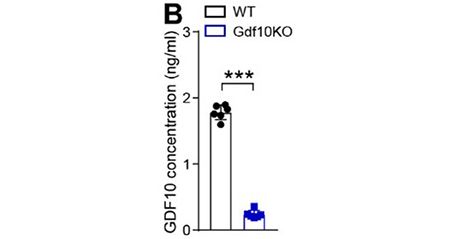FineTest ELISA kit contributes to the research on liver fibrosis treatment. The immunoassay is designed to measure GDF10 level in serum.
Article Title: Autocrine GDF10 Inhibits Hepatic Stellate Cell Activation via BMPR2/ALK3 Receptor to Prevent Liver Fibrosis
Journal Title: Advanced Science
DOI: 10.1002/advs.202500616
IF: 14.3
PMID: 40125634
Abstract: Hepatic stellate cells (HSCs) play a central role in the development of liver fibrosis, and their activation is controlled by a complex interplay of autocrine/paracrine signals within the liver microenvironment. Here, we show that growth differentiation factor 10 (GDF10) is specifically expressed by HSCs in both mouse and human livers, and its expression is reduced in activated HSCs. Loss of GDF10 function promotes HSC activation and exacerbates liver fibrosis in mice, while gain of GDF10 function alleviates this pathological condition. Mechanistically, autocrine GDF10 binds to BMPR2/ALK3 receptor to elicit SMAD1/5/8-SMAD7 signaling pathway in HSCs. Activated SMAD1/5/8-SMAD7 signaling pathway then inhibits the TGF-β-SMAD2/3 signaling transduction, which is essential for HSC activation. Moreover, recombinant GDF10 protein treatment suppresses HSC activation and alleviates liver fibrosis in mice. In conclusion, GDF10 is an autocrine suppressor of HSC activation and a potential therapeutic target for the treatment of liver fibrosis.
Keywords: Growth Differentiation Factor 10, Hepatic Stellate Cells, Liver Fibrosis Treatment, Transforming Growth Factor β
Immunoassay
| FineTest Product | Sample | Species | Detection Target |
| Mouse GDF10(Growth Differentiation Factor 10) ELISA Kit(EM1063) | serum | Mouse | GDF10 |
Validated Image

Figure Source: Adv Sci (Weinh). 2025 Mar 24:e2500616. doi: 10.1002/advs.202500616.
